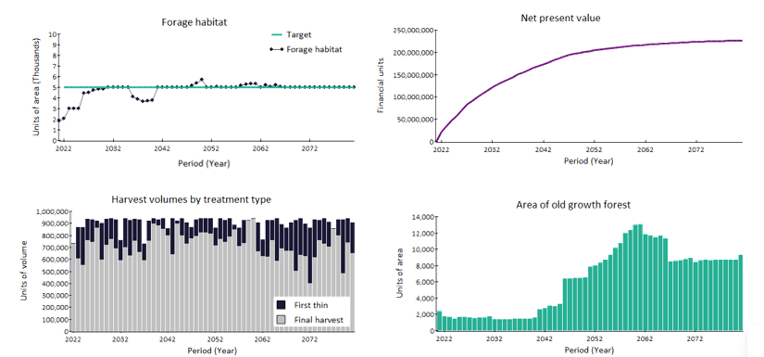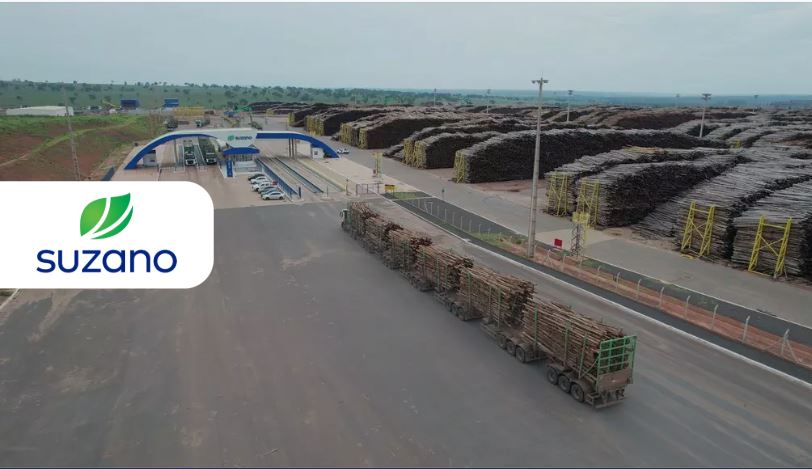In the evolving landscape of Environmental, Social, and Governance (ESG) considerations, forest managers face the complex task of balancing economic, social, and environmental objectives. Traditional methods of forest management, which rely heavily on experience and intuition, play a crucial role but can benefit significantly from complementary analytical techniques. We presented on this topic as part of the Society of American Foresters’ Forest Tech Connect Webinar Series and more recently at the May International Forest Business Conference. In this blog post, we summarize the key points from our presentation, focusing on how optimization can bring intelligence to the balancing act of timber revenue, carbon, and ESG.
Optimization in Forestry
At its core, optimization is a mathematical method used to find the best possible outcome to a problem while adhering to a set of rules. Linear programming, a type of optimization, is particularly effective in landscape-level planning where multiple objectives and constraints are at play.
In forestry, optimization analytics can be used to determine the best possible outcomes for a given set of objectives while adhering to constraints such as environmental regulations and operational capacities. This encompasses a broad spectrum of activities, from the allocation of resources for various silvicultural treatments to the scheduling of harvests to meet production goals without compromising the forest’s health or compliance obligations.
The technique enables forest managers to systematically evaluate different management strategies and make data-driven decisions that align with economic goals, social responsibilities, and environmental sustainability. For a more detailed introduction to optimization modeling, watch our recent webinar Forestry Impact from Insight: Use Cases for Optimization.
Multi-Objective Forest Management
Forest management involves juggling a myriad of objectives. Economically, there is the imperative to maximize timber revenue. Socially, there are commitments to local communities and ensuring recreational spaces. Environmentally, there is the need to conserve biodiversity and manage carbon stocks. Optimization helps in balancing these diverse goals by providing a framework to evaluate trade-offs and synergies.

For example, optimization models can help determine the best harvesting schedules that maximize revenue while minimizing environmental impact.
These models consider various constraints such as regulatory requirements, market conditions, and ecological sensitivities. By integrating data from multiple sources, optimization provides a holistic view of the forest landscape, ensuring that management decisions are both profitable and sustainable. We reviewed more use cases and practical applications in our recent webinar.
Carbon Project Modeling with Optimization
Carbon management is a topical and increasingly important area in forestry. Carbon-conscious management practices, such as selective logging and reforestation, are essential for mitigating climate change. However, these practices often come with trade-offs in terms of timber yield and economic returns.
Optimization models quantify these trade-offs, providing forest managers with the tools to evaluate different carbon management strategies. For instance, models can simulate the impact of reduced harvesting on carbon sequestration and compare this with the potential loss in timber revenue. Such analyses enable managers to make informed decisions that balance carbon objectives with traditional forestry goals.

In practical terms, a forest manager might use optimization to model the effects of a new carbon offset project. By inputting data on tree growth rates, carbon sequestration rates, and market prices for carbon credits, the model can assess the project’s financial viability and its environmental benefits. This data-driven approach ensures that carbon projects are both effective and economically sustainable.

Moving Forward with Optimization Analytics
Mathematical optimization can bring a new level of intelligence to forest management, offering a robust method for balancing the complex interplay of timber revenue, carbon management, and ESG objectives. As the demands on forest resources continue to grow, the adoption of optimization techniques will be crucial in ensuring that forests can meet economic needs while preserving their ecological and social functions.
The barriers to adopting optimization analytics in forestry are diminishing as the technology advances and affordable managed service options emerge. Optimization software has also become more intuitive, user-friendly, and adaptable, addressing the pain points of integrating complex systems into everyday operations.
Optimization analytics is not only about processing data but about creating actionable strategies that can be seamlessly integrated into your planning workflow. With the right support, any forestry operation can enhance its planning capabilities with optimization.
LEARN MORE:
-
Book a Discovery Call to explore how optimization analytics can help you achieve your forest management objectives.
- Sign up for the Forest Intelligence Brief to get new articles delivered to your inbox.




